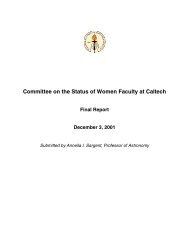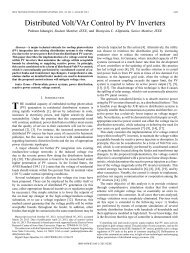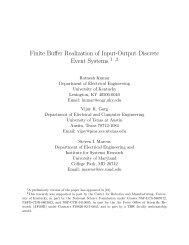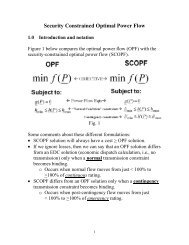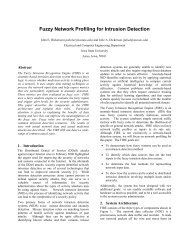Linearized Analysis of the Synchronous Machine for PSS Chapter 6 ...
Linearized Analysis of the Synchronous Machine for PSS Chapter 6 ...
Linearized Analysis of the Synchronous Machine for PSS Chapter 6 ...
You also want an ePaper? Increase the reach of your titles
YUMPU automatically turns print PDFs into web optimized ePapers that Google loves.
Fig. 5<br />
The transfer function <strong>for</strong> ΔT ar is given by:<br />
ΔTar<br />
− K K K K K K<br />
=<br />
=<br />
Δδ +<br />
∠ −180°<br />
2 3 4 2 3 4<br />
1 + sK<br />
3τ<br />
'<br />
d 0<br />
1 sK<br />
3τ<br />
'<br />
d 0<br />
From this last transfer function, we can identify <strong>the</strong> phase <strong>of</strong> <strong>the</strong><br />
electrical torque contribution relative to Δδ, which is:<br />
−1<br />
φar = −180<br />
− tan K3τ<br />
' d0<br />
ωosc<br />
where ω osc is <strong>the</strong> frequency corresponding to <strong>the</strong> weakly damped<br />
electromechanical modes <strong>of</strong> oscillation (from 0.2 Hz up to about<br />
2.0 Hz).<br />
What does this do to <strong>the</strong> resulting torque? Since it is negative, we<br />
draw <strong>the</strong> vector with an angle measured opposite <strong>the</strong> positive<br />
angle. We clearly get -180°, but we also get an additional negative<br />
angle from <strong>the</strong> tan -1 term. Since t’ d0 ω osc is positive, this additional<br />
angle must between 0 and 90°. The effect is shown in Fig. 6 below.<br />
10




